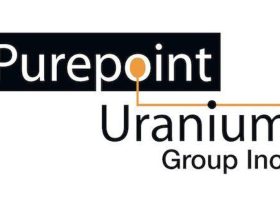Energy Fuels (TSX:EFR,NYSEAMERICAN:UUUU) is looking to boost its output in the coming months and years.
In its Q2 financial results, released on August 2, the company said it is aiming to increase its uranium production to a run rate of 1.1 million to 1.4 million pounds of U3O8 per year by late 2024. Looking further into the future, it plans to reach a run rate of up to 5 million pounds per year in the coming years, contingent on market conditions.
“Everything we do is a high-value product line. We have a long history of producing uranium, (and) we produced approximately two-thirds of uranium in the US over the last six to seven years,’ said CEO Mark Chalmers during the firm’s earnings call. ‘We’ve also been one of the largest producers of uranium over the last 10 or 15 years.’
The company ended the quarter with US$200.94 million in working capital and no debt, selling 100,000 pounds of U3O8 on the spot market at US$85.90 per pound, or US$8.59 million. It achieved a gross profit margin of 57 percent.
Energy Fuels also secured a new long-term uranium sales contract with a US nuclear utility during the period. The company will deliver a total of 270,000 to 330,000 pounds of uranium between 2026 and 2027 under a “hybrid” pricing formula, with the potential to extend the arrangement to an additional 180,000 to 220,000 pounds until 2029.
Commenting on the company’s activities, Chalmers reaffirmed a commitment to advancing various other business segments, such as vanadium and rare earths production capabilities, while also pursuing medical isotope production.
Last June, the Utah Division of Waste Management and Radiation Control issued the company a license to recover research and development quantities of Ra-226, an isotope of radium, at its White Mesa mill. Energy Fuels is aiming to complete engineering on a research and development pilot facility for the production Ra-226 at the mill.
‘The ‘common thread’ connecting all these critical minerals is that they are typically produced from naturally radioactive feedstocks, which Energy Fuels has the licenses, infrastructure and capability to manage in a way unique to the Company within the Western Hemisphere,’ Chalmers explained in last week’s press release.
Another Q2 highlight was the commissioning of a commercial-scale Phase 1 rare earths separation circuit at White Mesa. The company is anticipating output of 25 to 35 metric tons of separated NdPr, and 10 to 20 metric tons of a mixed rare earths carbonate from Phase 1 by early Q3. It produced about 12 metric tons of separated NdPr in Q2.
As part of its efforts to secure monazite feed for the mill, Energy Fuels announced plans to acquire Base Resources (ASX:BSE,OTC Pink:BSRUF) in April, a move that will give it access to the Toliara heavy mineral sands project in Madagascar. Toliara has a high-value, low-cost monazite stream produced as a by-product of titanium and zirconium.
Alongside the Base Resources purchase, Energy Fuels completed binding agreements in June to develop the Australia-based Donald heavy mineral sands and rare earths project with Astron (ASX:ATR).
A definitive feasibility study for Donald shows the project has the potential to produce approximately 7,000 to 8,000 metric tons of monazite annually during its first phase, and 13,000 to 14,000 metric tons in its second phase.
Securities Disclosure: I, Giann Liguid, hold no direct investment interest in any company mentioned in this article.





